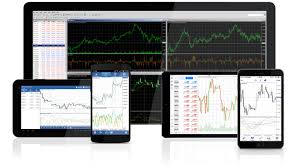
Technical analysis is one of the most powerful tools for traders looking to gain insight and make informed decisions in the world of contracts for difference (CFDs). By studying historical price charts and market data, traders can identify patterns, trends, and potential entry or exit points. This blog will break down the basics of technical analysis and explore how you can apply it effectively in CFD Trading.
What is Technical Analysis?
Technical analysis involves evaluating past market performance, primarily through price charts and volume data, to predict future price movements. Unlike fundamental analysis, which examines a company’s financial health or market conditions, technical analysis focuses solely on the behavior of prices and patterns within the market.
When it comes to cfd trading, technical analysis helps traders make calculated decisions by showing probable price movements and identifying high-probability trading opportunities.
Key Tools and Techniques of Technical Analysis
1. Charts Tell the Story
Price charts form the foundation of technical analysis. Traders use different types of charts to visualize price data over time. Some of the most popular chart types include:
• Line Charts: A simple line connecting closing prices over time.
• Bar Charts: Show the opening, closing, high, and low prices for a trading interval.
• Candlestick Charts: Popular among traders for their detailed representation of price movements.
Candlestick charts remain a favorite because they highlight market sentiment, making it easier to identify bullish or bearish trends.
2. Identify Trends and Trendlines
Recognizing trends is critical for CFD trading. A trend is the general direction in which a price is moving—upward, downward, or sideways. Trendlines help traders see these trends clearly by connecting either the highs or the lows of the price movements. They are essential for spotting breakout or reversal opportunities.
Trends can be categorized as:
• Uptrend: A series of higher highs and higher lows.
• Downtrend: A series of lower highs and lower lows.
• Sideways/Range-bound: Relatively stable movement—neither upward nor downward.
3. Understanding Support and Resistance Levels
Support and resistance levels are pivotal concepts in technical analysis:
• Support: A price level where demand tends to prevent the price from falling further.
• Resistance: A price level where selling pressure tends to prevent the price from rising above.
By identifying these levels, traders can anticipate where the market might reverse or continue its current direction.
4. Using Technical Indicators
Technical indicators are mathematical calculations applied to price, volume, or open interest data to provide insights into market trends and dynamics. Commonly used indicators include:
• Moving Averages (MA): Averages the price over a specific period for smoother trend visualization.
• Relative Strength Index (RSI): Assesses whether a market is overbought or oversold.
• Bollinger Bands: Measures price volatility and identifies potential high and low points.
Experimenting with these indicators can help traders refine their strategies and focus on what works best for their style.
5. Volume Analysis
Volume analysis evaluates the number of shares, contracts, or lots traded in a given period. A spike in volume often suggests stronger price momentum, while a drop may indicate weakening interest. By pairing volume data with price movements, traders can validate trends or reversals.
How to Apply Technical Analysis in CFD Trading
CFDs allow traders to speculate on price movements without owning the underlying asset, making timing crucial for success. Here’s how you can use technical analysis in your CFD trading:
1. Develop a Trading Plan
Use historical data to set clear entry and exit points based on support, resistance, or trendline breaks.
2. Combine Indicators with Price Patterns
Relying on just one indicator can give limited insights. Combining tools like RSI and Bollinger Bands with price action analysis increases reliability.
3. Test Your Strategy
Always backtest your strategy using historical data before applying it to live trading. This process ensures your methods are effective under different market conditions.
4. Monitor Market Conditions
Markets move with global events, so keep an eye on news or economic shifts. Use technical analysis to guide your trades, but always consider broader influences.
Think in Probabilities, Not Certainties
Technical analysis doesn’t promise guaranteed success but provides a systematic approach to frame probable price movements. CFD trading involves risks, and the goal of technical analysis is to help you make informed, data-driven decisions that enhance your chances of success.
Take the First Step
With the right tools, practice, and discipline, mastering technical analysis can elevate your CFD trading strategy. Begin by familiarizing yourself with basic chart patterns and indicators, then gradually refine your skills as you analyze real-world market data.

